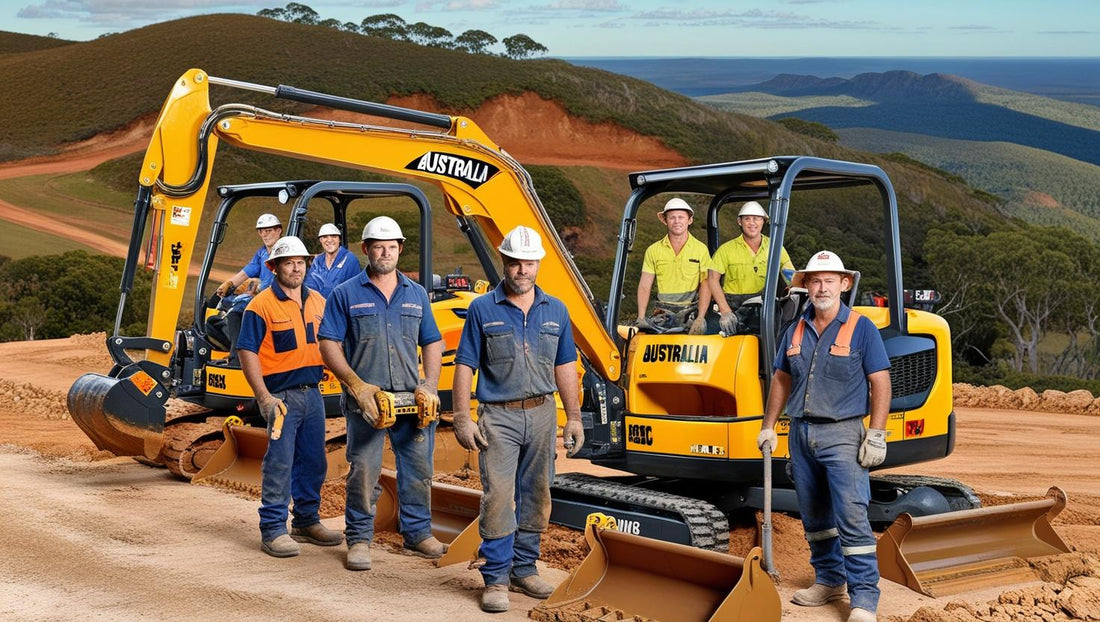
The Evolution of Excavation Technology: From Manual Labor to Modern Marvels
Share
The history of earthmoving equipment is a fascinating journey that spans centuries of human innovation. From the simplest hand tools to today's sophisticated excavators, the evolution of digging technology tells a story of human ingenuity and persistence. The earliest excavation work relied entirely on manual labor, with workers using basic tools like shovels and picks to move earth. This labor-intensive approach limited the scale and speed of construction projects for thousands of years.
The industrial revolution brought significant changes to excavation methods. Steam-powered excavators first appeared in the early 19th century, with the steam shovel patented in 1839. These early machines, while primitive by today's standards, represented a quantum leap in earthmoving capability. The ability to move large volumes of material mechanically transformed infrastructure development, making massive projects like the Panama Canal possible. The transition from steam to diesel power in the early 20th century further enhanced the capabilities of these machines, improving their mobility and operational efficiency.
Modern excavator for sale options bear little resemblance to their ancestors. Today's machines feature hydraulic systems that provide precise control and tremendous power in a relatively compact package. The introduction of hydraulic technology in the mid-20th century revolutionized excavator design, allowing for more versatile and efficient machines. Modern excavators can rotate 360 degrees, reaching and digging in any direction without repositioning the entire machine—a capability that dramatically improved productivity on construction sites.
The introduction of the mini excavator for sale in the 1970s represented another significant innovation in the industry. These compact machines enabled excavation work in confined spaces where traditional full-sized excavators couldn't operate. The versatility of mini excavators quickly made them indispensable for urban construction, landscaping, and utility work. Their smaller footprint and reduced weight cause less damage to finished surfaces, making them ideal for renovation projects and work on established properties.
The attachment revolution further transformed excavator functionality. Modern excavators can be equipped with dozens of specialized attachments, converting a single machine into a multi-functional workstation. The hydraulic grab attachment enables precise material handling, while the excavator ripper attachment can break through hard ground that would otherwise require explosives. Specialized excavator buckets for sale include trenching, grading, and screening options that optimize the machine for specific tasks.
The digital revolution has brought another dimension to excavator technology. GPS guidance systems, 3D modeling capabilities, and automated machine control now enable operators to work with unprecedented precision. Some modern excavators can maintain perfect grade automatically, following digital plans with millimeter accuracy. These technological advances have dramatically improved efficiency and reduced material waste on construction projects. The integration of telematics systems allows for remote monitoring of machine health, location tracking, and performance optimization.
The market for heavy equipment attachments Gold Coast and beyond has expanded to meet the growing demand for specialized tools. Manufacturers now offer an extensive range of attachments designed for specific applications, from demolition to precision grading. This specialization allows contractors to customize their equipment fleet for maximum efficiency, often eliminating the need for multiple dedicated machines.
Looking toward the future, autonomous and semi-autonomous excavators are already being tested on construction sites around the world. These machines can perform repetitive tasks with minimal human intervention, potentially improving safety and efficiency on job sites. Electric excavators are also gaining traction, offering zero-emission operation that enables indoor work and reduces environmental impact. The market for construction machinery parts Queensland and worldwide will likely continue to evolve as these technologies mature.
The evolution of excavation technology represents one of the most significant developments in construction history. From humble beginnings to today's sophisticated machines, excavators have transformed how humans shape the earth. As we look to the future, continued innovation promises even more capable and efficient machines that will help build the infrastructure of tomorrow.
